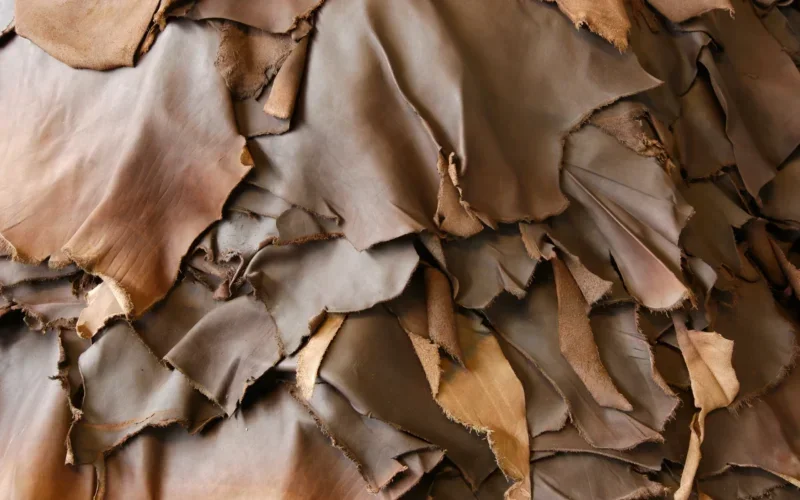Desiccant For Clothes Storage
.webp)
Buy Desiccant For Clothes Storage
Industry Challenges
Sensitivity & Safety
- Textiles, dyes, and trims can easily stain, and react with chemicals, and foreign materials can stick to them. Desiccants must be dust-free, leaching-free, and free of any unit mold or pure residue to safely contain sensitive textiles (like silk, leather, and synthetic blends) and to keep products within compliance of local regulations (e.g. Prop 65, REACH)
Degradation Variability
- Moisture does not just inhibit performance by way of dampness; but also can lead to: mold and mildew growth on organic fibers (like: cotton, wool) yellowing/discoloration of whites/synthetics molded metal trims (like: zippers, rivets, snaps) adhesive failure; and musty odors, that hang around. Products require different levels of protection.
Dynamic Environment
- Global supply chains inherently expose goods to extreme changes in humidity and temperature - ocean voyages, stopping in tropical ports, air-freighted freight, long duration storage etc. The desiccants must maintain high absorption capacity and physical characteristics and not prematurely saturate in these very harsh, different environments.
Sustainability
- The industry is under siege for ways to reduce waste for consumption packaging. Desiccants that are plastic or a plastic composite and cannot be recycled, are not aligned with brand eco-initiatives. We need to develop biodegradable, recyclable, or reusable product formats that do not limit performance.
Why Choose Our Desiccants

Guaranteed Material Safety
Our desiccants are rigorously engineered to be dust-free, non-leaching, and non-staining, ensuring absolute protection for sensitive fabrics, dyes, leather, and trims.

Superior Corrosion Protection
Advanced formulations effectively prevent rust on all types of metal components integrated into garments and accessories.

Unmatched Performance Across Climates
Our desiccants maintain consistent high moisture absorption capacity and physical integrity under extreme humidity fluctuations encountered in global logistics.

Enhanced Sustainability Focus
Our desiccants are designed for secure placement within packaging, remaining unobtrusive and easy to handle for manufacturers and consumers.

Optimized User Experience
Our desiccants are designed for secure placement within packaging, remaining unobtrusive and easy to handle for manufacturers and consumers.
Usage
Natural Fibers (Cotton, Wool, Linen, Silk)
Usage Overview
Protecting hygroscopic natural fibers prone to moisture absorption, microbial growth, and physical degradation during storage and transit.

Key Advantages
- Prevents Mold/Mildew Growth: Actively controls humidity to inhibit fungal and bacterial growth on organic materials, avoiding irreversible stains and fiber damage.
- Maintains Dimensional Stability: Reduces risks of fiber swelling, shrinkage, or distortion caused by ambient moisture uptake during storage.
- Preserves Colorfastness: Protects natural dyes and pigments from bleeding, fading, or discoloration induced by high humidity or condensation.
- Prevents Water Spotting: Shields delicate fabrics like silk and unfinished linen from permanent watermark stains caused by localized moisture exposure.
- Eliminates Musty Odors: Prevents the development of odor-causing microbes that thrive in damp environments on wool and cotton.
Synthetics & Blends (Polyester, Nylon, Viscose, Blended Fabrics)
Usage Overview
Protecting moisture-sensitive coatings, dyes, and components within synthetic textiles and their blends.

Key Advantages
- Prevents Color Migration: Reduces humidity-driven dye transfer issues between different fabric layers or printed surfaces.
- Protects Functional Coatings: Prevents delamination, cracking, or loss of water repellency (e.g., DWR finishes) due to moisture absorption in coatings.
- Minimizes Fiber Degradation: Slows hydrolysis of nylon and other polymers sensitive to moisture-induced molecular breakdown.
- - Reduces Fiber Caking: Prevents moisture-related clumping or stiffening of synthetic fibers like rayon or viscose during compression storage.
- Safeguards Elastics: Maintains integrity and elasticity of spandex and other elastomeric fibers vulnerable to hydrolysis.
Leather & Suede
Usage Overview
Protecting animal hides and finished leather goods sensitive to mold, salt efflorescence, and finish damage from humidity.

Key Advantages
- Inhibits Mold Growth: Prevents destructive mold colonization on protein-rich leather surfaces and backing materials.
- Prevents Salt Efflorescence: Minimizes migration and crystallization of tanning salts to the surface, avoiding unsightly white blooms.
- Preserves Finish & Softness: Protects surface finishes, dyes, and fatliquors from moisture-induced degradation, preventing hardening or cracking.
- Avoids Staining: Reduces risks of moisture-related dark stains or discoloration, particularly on light-colored or aniline leathers.
- Prevents Odor Absorption: Reduces leather's tendency to absorb and trap musty environmental odors during transit or storage.
Metal Trims & Fasteners (Zippers, Buckles, Snaps, Rivets)
Usage Overview
Protecting corrosion-prone metal components integrated into textile products.

Key Advantages
- Prevents Rust & Corrosion: Creates a dry micro-environment to inhibit oxidation and galvanic corrosion on steel, brass, or aluminum fittings.
- Avoids Fabric Staining: Eliminates rust transfer from trims onto surrounding textiles, preserving garment appearance.
- Maintains Functionality: Ensures smooth operation of zippers, clasps, and buckles by preventing corrosion-induced jamming or breakage.
- Protects Plated Finishes: Prevents peeling or tarnishing of decorative metal plating (e.g., gold/silver tones) caused by moisture exposure.
- Uses Targeted Protection: Employes advanced desiccants with vapor phase corrosion inhibitors (VpCI) where direct contact with metal is challenging.
FAQ
Packaging & Transportation Desiccant
Silica gel desiccants are necessary to protect products in transit and storage. Silica gel desiccants are packaged in breathable sachets or canisters, and manage humidity in shipping containers, cartons, and crates. Silica gel absorbs moisture in the ambient air, and prevents condensation, mold, metal corrosion, and damage to moisture sensitive materials. Silica gel is perfect for electronics, machinery, art, and paper products, to ensure items arrive in the right condition no matter what climate change may have occurred during the logistics of global transport.
Electronics Industry
Silica gel is well known for its moisture control properties in electronic manufacturing and storage. Proper protection of sensitive components is critical, especially in packaging of items such as circuit boards, semiconductors, or optical devices. By using silica gel in sealed packages, or sealed cabinets, electronics are kept in low-humidity environments. This reduces the risks of unforeseen damage to components from oxidation, electrical shorts, and performance failures of any kind. The properties of silica gel, non-corrosive, dust-free, and safe for direct contact with delicates parts, ensures safe shipping and handling from factoryels in an unopened condition.
Pharmaceutical Industry
Silica gel provides vital moisture prevention in medicine bottles, diagnostic kits and as a component of medical device packaging. Silica gel satisfies FDA and pharmacopeia requirements and protects tablets, capsules, and laboratory reagents from both moisture-driven degradation and elevated moisture levels. Importantly, silica gel acts to stabilize humidity levels in sealed environments extending shelf-life, sterility, and therapeutic effectiveness or viability. Silica gel packets not only work well to smooth out humidity changes, but they are also transparent which allows a visual inspection. Furthermore, cobalt-free silica gel packets pose no toxicity issues in deliberately sensitive applications.
Food Industry
Silica gel provides vital moisture prevention in medicine bottles, diagnostic kits and as a component of medical device packaging. Silica gel satisfies FDA and pharmacopeia requirements and protects tablets, capsules, and laboratory reagents from both moisture-driven degradation and elevated moisture levels. Importantly, silica gel acts to stabilize humidity levels in sealed environments extending shelf-life, sterility, and therapeutic effectiveness or viability. Silica gel packets not only work well to smooth out humidity changes, but they are also transparent which allows a visual inspection. Furthermore, cobalt-free silica gel packets pose no toxicity issues in deliberately sensitive applications.

